Key takeaways:
- Multidisciplinary support for individuals with cerebral palsy enhances quality of life through tailored interventions and emotional support.
- Local leaders can significantly influence community engagement and resource access, fostering collaboration and advocacy.
- Effective strategies include personalized outreach, educational workshops, and partnerships with local businesses and organizations.
- Community partnerships lead to accessible activities and emotional support networks, enriching the experience for families affected by cerebral palsy.
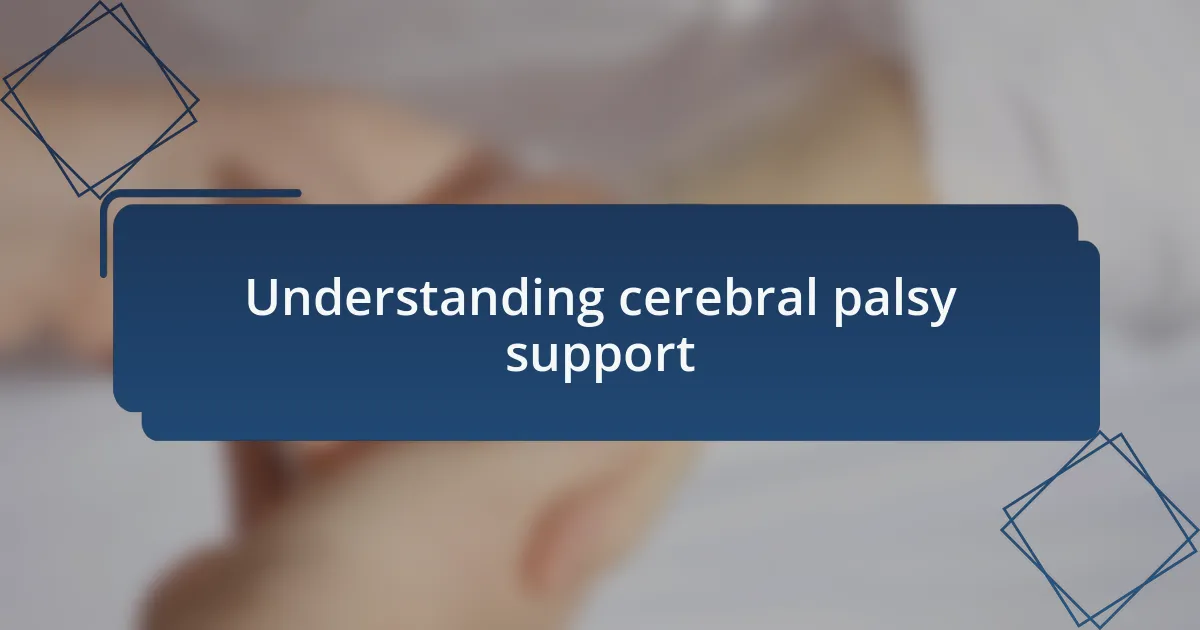
Understanding cerebral palsy support
Understanding cerebral palsy support involves recognizing the unique needs of individuals with this condition. From my experience, it’s crucial to embrace a multidisciplinary approach that includes physical therapy, occupational therapy, and educational support. Each child is different, and I’ve seen firsthand how tailored interventions can lead to remarkable improvements in their quality of life.
One poignant moment for me was witnessing a local leader advocate passionately for accessible recreational programs for children with cerebral palsy. It made me realize how vital community engagement is in fostering inclusivity. Have you ever thought about how simple community activities can create lasting change? Imagine a park where every child can play—it’s not just a dream; it’s achievable with the right support.
Additionally, support extends beyond physical interventions. Emotional support is equally important. Reflecting on conversations with parents, I learned that they often feel isolated in their journey. We must ask ourselves: How can we better connect families and create a stronger support network? By sharing resources and experiences, we can cultivate a sense of belonging that empowers everyone involved.

Importance of local leaders
Local leaders play a crucial role in shaping the support networks available for individuals with cerebral palsy. I recall attending a community meeting where a local leader proposed creating a mentorship program connecting families with experienced advocates. It struck me how powerful local initiatives can be, as they embody the spirit of collaboration and foster a sense of solidarity among families.
The impact of local leadership on awareness and education cannot be overstated. I once participated in a workshop led by a passionate local figure who shared her journey with cerebral palsy. Her stories resonated deeply, proving how personal narratives can spark understanding and empathy within a community. Have you ever witnessed someone transform the minds of an audience simply through heartfelt storytelling?
Moreover, local leaders often serve as the bridge between families and critical resources. I remember meeting a local leader who tirelessly worked to secure funding for accessible transportation options. It made me realize that advocacy at the grassroots level is vital; without these champions, many families would face significant barriers in accessing essential services. How can we, as a community, support these leaders in their mission? The answer lies in our collective commitment to stand with them, ensuring that every voice is heard and valued.
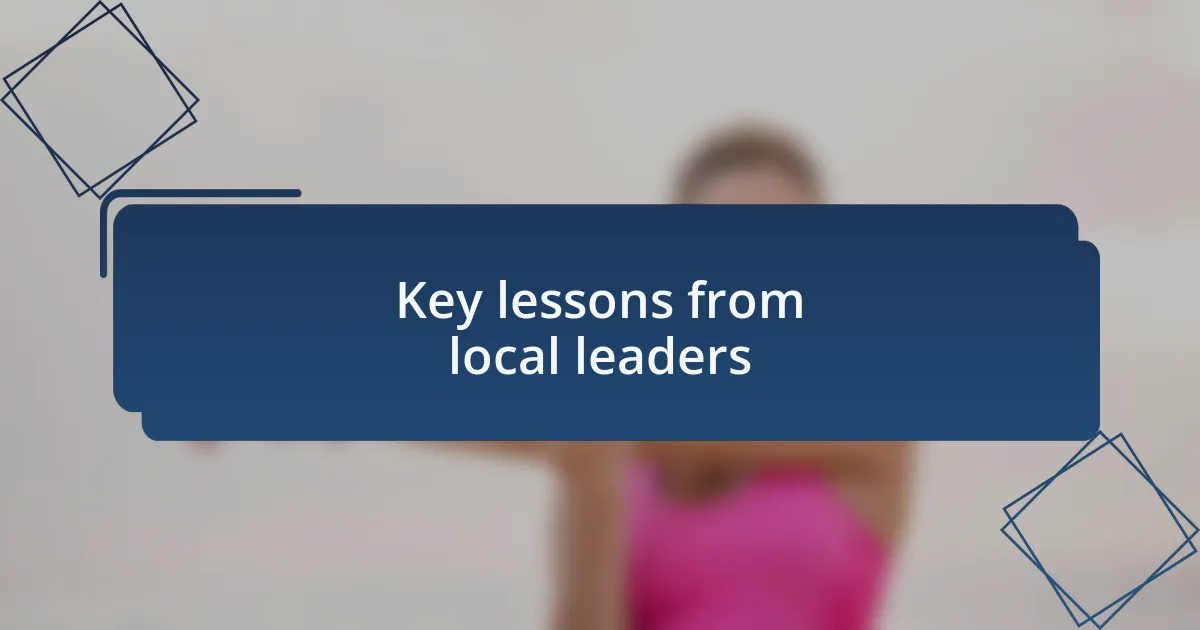
Key lessons from local leaders
Local leaders teach us the importance of listening to the community they serve. I remember attending a focus group led by a dedicated individual who took the time to hear concerns and suggestions from families. It made me realize how essential it is for leaders to prioritize open communication; this approach fosters trust and encourages collaboration among stakeholders. Have you ever felt empowered just by being heard?
Another key lesson is the value of persistence in advocacy. A local leader shared a powerful story about the years of work required to launch an inclusive sports program for children with disabilities. Hearing about the obstacles he faced and his unwavering commitment to this vision inspired me; it highlighted how change often takes time and determination. Have you followed a cause that challenged you to stay resilient in the face of setbacks?
Lastly, local leaders emphasize the power of community partnerships. I saw this firsthand during an event where various organizations collaborated to provide resources for families affected by cerebral palsy. It struck me how much more effective we are when we come together, pooling our strengths and resources. Isn’t it amazing how collective efforts can catalyze real change in our community?
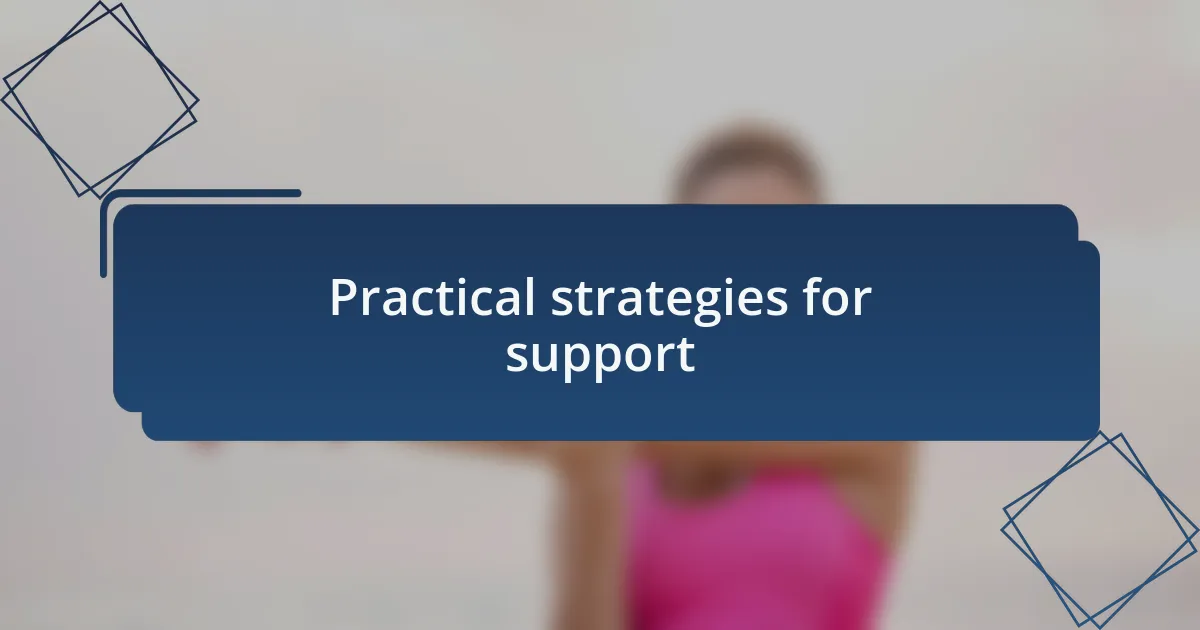
Practical strategies for support
When supporting families affected by cerebral palsy, one practical strategy I learned is the importance of personalized outreach. I recall a local initiative where volunteers reached out personally to families, asking about their unique needs and concerns. This approach not only provides tailored support but also creates a sense of belonging, reminding families that they are not alone in their journey. How often do we overlook the power of a simple phone call or a heartfelt message?
Another effective strategy involves organizing regular workshops that educate families about available resources. I once attended a workshop where experts shared insights on therapy options and financial assistance. The turnout was inspiring, and it was clear that families left empowered with information they never knew existed. Have you ever participated in an event that brought valuable knowledge to your life?
Collaboration with local businesses is also a game-changer. I remember helping coordinate a fundraiser where local shops donated a portion of their sales to support cerebral palsy programs. This not only raised funds but built connections within the community, fostering goodwill and awareness. What opportunities are you missing by not engaging local businesses in your advocacy efforts?
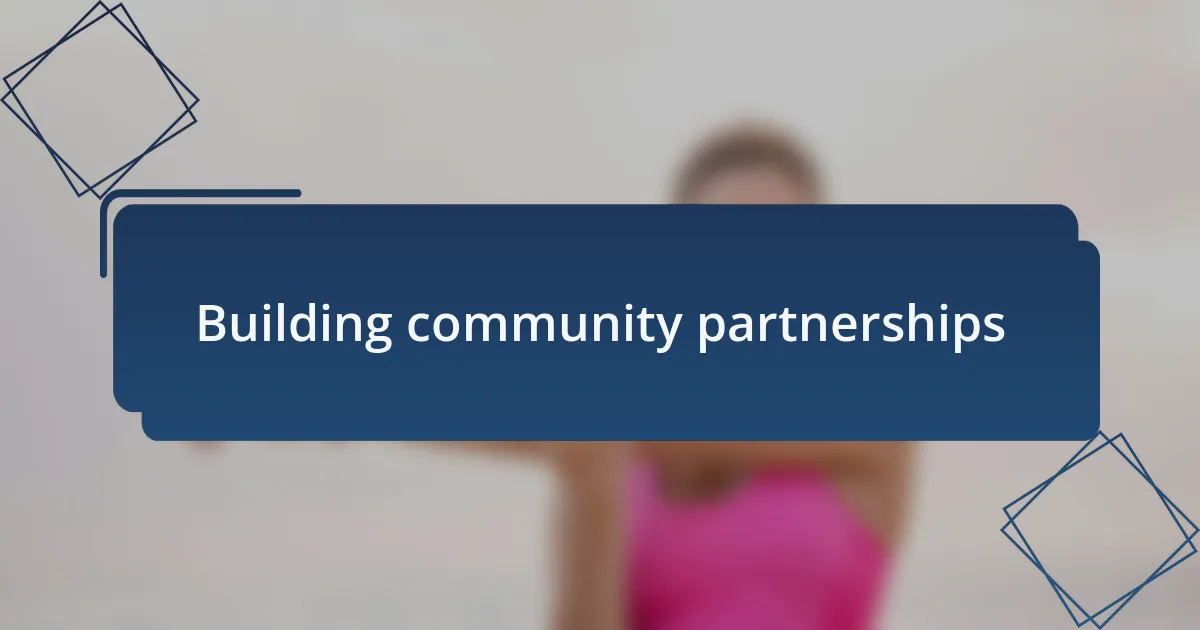
Building community partnerships
Building community partnerships is a pivotal step in enhancing support for individuals with cerebral palsy. I recall visiting a local community center where a partnership was established with a nearby university. Students from various disciplines organized inclusive activities like sports and art classes, igniting joy and connection among families. Has there ever been a moment when you witnessed collaboration thrive in your community?
Another impactful experience I had involved a local healthcare provider. They teamed up with advocacy groups to create a monthly support group for parents of children with cerebral palsy. This initiative not only provided emotional support but also pooled resources, allowing families to share tips and strategies. When was the last time you felt that kind of solidarity with others facing similar challenges?
Moreover, I’ve seen firsthand how partnering with local schools can enrich both the educational environment and community awareness. A nearby school organized an awareness week that included presentations and discussions about cerebral palsy. It opened up dialogues, broke down stigma, and engaged students in meaningful ways. Can you imagine how powerful it is to educate young minds and encourage empathy from such an early age?
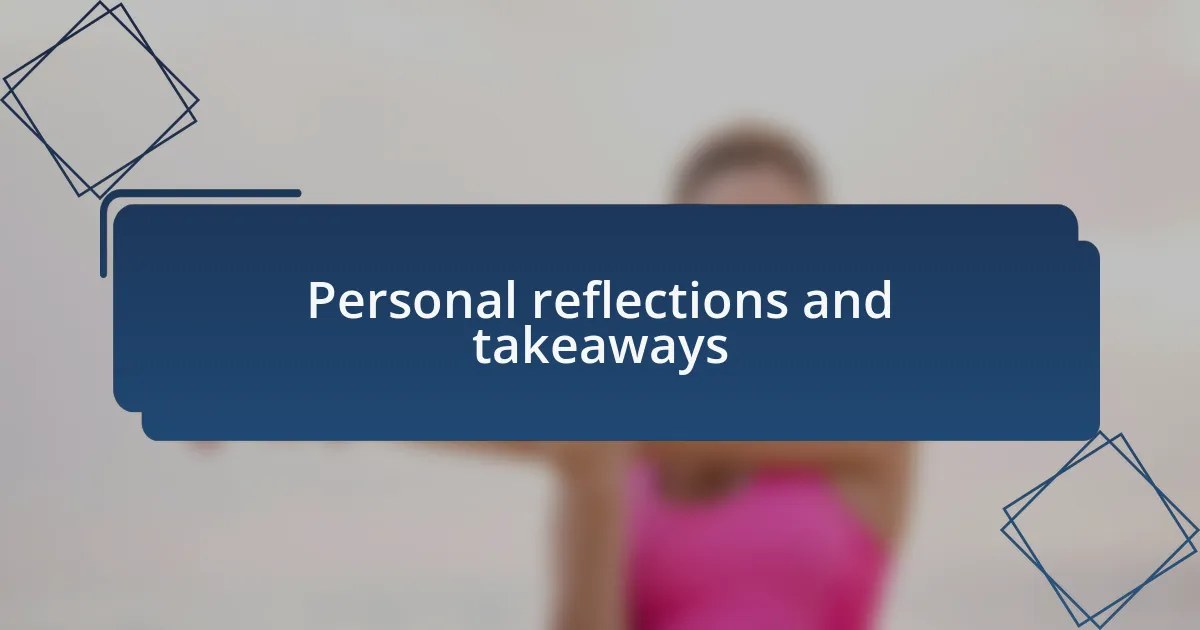
Personal reflections and takeaways
Reflecting on these experiences, I can’t help but feel inspired by the passion and commitment of local leaders. One particular moment stands out: I attended a community wellness fair where various organizations came together to support families impacted by cerebral palsy. The energy in the room was palpable, and I felt a sense of belonging that was truly uplifting. Have you ever experienced that kind of warmth in a gathering where everyone shares a common purpose?
Another takeaway is the importance of listening to the voices of those directly affected by cerebral palsy. I remember sitting in on a meeting with parents, where their experiences shaped the direction of community initiatives. Their stories were filled with both challenges and triumphs, reminding me that every effort made is rooted in real lives. How often do we give space for these narratives in our conversations?
Lastly, I’ve come to realize that every partnership brings a unique blend of ideas that can ignite change. At one point, I witnessed a collaboration between a local theater and families dealing with cerebral palsy. They created performances that highlighted personal stories, fostering understanding and acceptance. Moments like this make me wonder: What creative solutions could emerge if we continued to think outside the box?